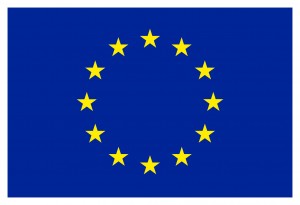WG2 AND WG3 LEARNING TRACK (please note that a basic knowledge of MR is required)
DAY 2 27th June 2017
09:00 – 10:30 Assessment of fat fraction – Trainer : Jedrek Burakiewicz
Brief outline : The assessment of fatty replacment of muscle tissue is one of the most commonly applied techniques in the neuromuscular imaging field. In this lecture, we will explain how this is commonly done, and what the pitfalls and caveats are.
10:45 – 12:15 – Quantitative T2 – from basic to advanced – Trainer: Benjamin Marty
Quantitative assessment of the T2 relaxation time has been used often in the neuromuscular field to assess edema/inflammation. In this lecture, we will explain the basics of the multi-echo sequence whith which this is commonly performed, and go into the various analysis methods around today.
13:15 – 16:30 – Practical MRI (Group 1) and Practical analysis (Group 2)
Practical hands-on session. Groups of 6 participants will follow both sessions on separate days. The sessions will include MR scanning using both basic and advanced methodology, and data analysis.
DAY 3 28th June 2017
09:00 – 10:30 – MR spectroscopy and Speeding up acquisition – Trainer Hermien Kan (45 mins)
In vivo MR spectroscopy allows for the non-invasive study of tissue metabolism. In contrast to invasive biochemical and histo-chemical methods, in vivo MRS permits longitudinal investigations, which makes it possible to follow the progression of a disease or the effect of therapeutic interventions without being hindered by inter-individual differences. We will introduce state of the art MR spectroscopy techniques applied to diagnose and assess treatment effects in neuromuscular disorders.
Speeding up acquisition – Trainer Kieren Hollingsworth (45 mins)
There is increasing evidence that diagnosis and treatment-follow of neuromuscular disorders benefit from a multi-contrast approach in which several MRI techniques are combined to provide a comprehensive assessment of muscle status. Unfortunately, measuring multiple contrast parameters in one imaging session leads to a long examination time, which is often poorly tolerated by patients. Therefore there is great need for fast comprehensive imaging protocols. In this lecture, the latest accelerated imaging techniques for imaging skeletal muscle will be introduced.
10:45 – 12:15 – DTI of skeletal muscle – Trainer: Martijn Froeling/Olivier Scheidegger
Diffusion-tensor magnetic resonance imaging (DTI) has developed into a method that enables noninvasive in vivo three-dimensional assessment and visualization of the muscle fiber microstructure and architecture. Here, you will learn about the design and application of clinical DTI protocols for assessing (neuro-)muscular diseases. We will discuss sequence design, image post-processing and visualization, as well as possible pitfalls in the interpretation of diffusion imaging data.
13:15 – 16:30 – Practical MRI (Group 2) and Practical analysis (Group 1)
Practical hands-on session. Groups of 6 participants will follow both sessions on separate days. The sessions will include MR scanning using both basic and advanced methodology, and data analysis.

